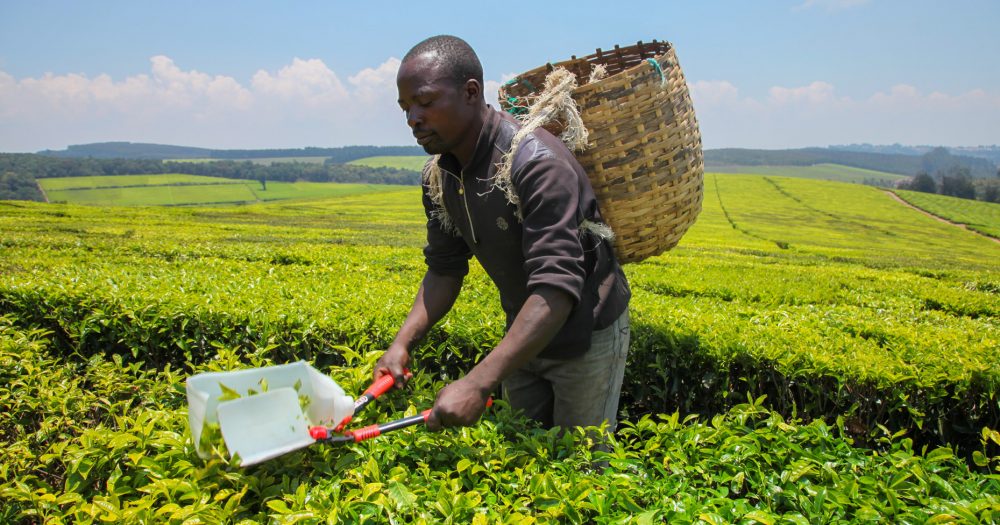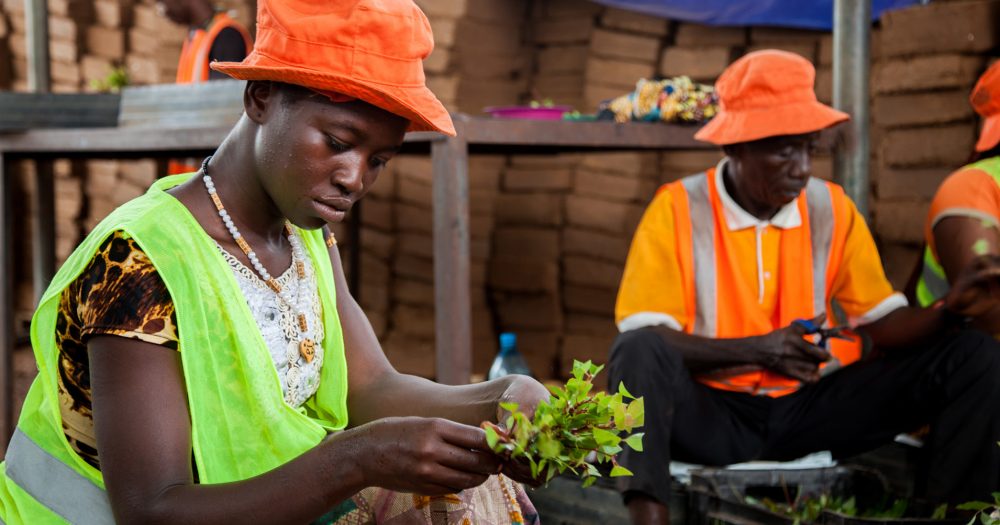Our investment
Description of the investment.
Description of the investment.
TI Clean Mobility is a clean mobility platform which will help decarbonise the transport sector. The company is dedicated to creating India’s most comprehensive electric vehicle platform and is strategically targeting diversified automotive segments focusing on high productivity, including electric three-wheelers, electric heavy commercial vehicles, electric tractors and electric small commercial vehicles.
Impact information
Applies to investments made from 2019 onwards. The tabs in this section define what we expect to achieve through the investment, assessing the potential impact of the investment against six dimensions of impact. You can find more details on our methodology of assessing impact here.
Applies to investments made from 2019 onwards. The tabs in this section define what we expect to achieve through the investment, assessing the potential impact of the investment against six dimensions of impact. You can find more details on our methodology of assessing impact here.
What?
| Impact |
|---|
|
|
|
How?
| Primary | Secondary |
|---|---|
|
(i) Support the creation of direct manufacturing jobs in a low-carbon sector/green industry; (ii) Support the growth of electric vehicle manufacturing capacity to contribute to greenhouse gas emissions abatement through the increased adoption of electric vehicles, e-trucks and e-tractors and transition from highly emissive status quo. |
To improve productivity and efficiency of farmers, particularly smallholder farmers, by providing alternative tractor with lower operating cost and maintenance cost (no smoke, no noise) compared to gas or diesel tractors. |
Who?
| Stakeholder | Geography | Characteristics |
|---|---|---|
| Employees |
India |
35 per cent to 40 per cent of all full-time equivalent (FTE) employees including full-time contractors are expected to be low and semi-skilled workers and low income, living on <$6.85/day (2017 PPP). The gender representation in the FTE workforce is projected to increase from the current 8 per cent to approx. 15-20 per cent over the next 3-4 years. |
| Planet |
Global |
India is the world’s third largest crabon dioxide emitter and home to 22 out of the world's 30 most polluted cities. The transport sector accounts for 12.9 per cent of India’s greenhouse gas emissions (IEA, 2021). Tailpipe emissions account for 65-80 per cent of an automobile’s emissions hence the transition to electric vehicles is expected to support a cleaner transport system. |
| Smallholder farmers |
India |
The company's electric tractor sales target six states (Uttar Pradesh, Madhya Pradesh, Maharashtra, Rajasthan, Gujarat, and Karnataka), where 70-90 per cent of smallholder farmers, or an estimated 80 per cent of the company's prospective e-tractor end-users, cultivate less than five hectares, implying low-income reach by our income proxies. Its e-tractors are stipulated to have a total operating cost that is approximately 20-44 per cent lower than their internal combustion engines counterparts. |
How much?
| Scale | Depth/Duration |
|---|---|
|
The company will employ 4,332 full-time equivalents by 2028 (over 1,500 jobs likely low-income) and manufacture 155,000 vehicles. Growth plans funded by this co-investment are estimated to increase direct employment by 3,731 by 2028. This implies new jobs increasing by seven-fold based on current 600 employees. The company will sell 100,000 electric three-wheelers by 2028, serving 100,000 drivers (including Tier 2 and Tier 3 cities). The project is expected help to reduce greenhouse gas emissions. The electric three-wheeler segment avoids 12.4 million of carbon dioxide equivalent (CO2e) per year. The electric tractor segment avoids 7.8 million CO2e per year. The electric truck segment averts up to 32 million CO2e per year. Lastly, the electric small commercial vehicles could prevent 9 million CO2e per year. Moreover, there's $100 per month of net savings on tractor costs for farmers using an electric tractor compared to a diesel tractor. |
The growth in employment is expected to be on permanent direct production roles at its manufacturing plants and sales operations. Indirect job creation for electric three-wheeler drivers. Greenhouse gas emissions avoided will vary by specific uses and final locations of electric vehicles based on factors such as gas/diesel vehicle substitution and local grid emission intensity. We are confident that net greenhouse gas emissions will be avoided given lower emissions related to electric vehicle production, processing, and fuel use. |
Contribution/additionality
| Contribution/additionality |
|---|
|
Risk
External RiskRisks relate to battery charging stations/points and ecosystem keeping pace with electric vehicle sales, and power available for charge. Risks related to policy for manufacturing, sales of electric vehicles, tax and other incentives which might have an impact on uptake and is linked to commercial risks. Evidence RiskRisk that the company and fund manager will not be able to accurately estimate greenhouse gas emissions avoided by the investment due to lack of visibility of value chain and specific use of electric vehicles. Considered low risk given strong evidence base that electric vehicles are a necessary shift to decarbonise the global transport sector. |
Environmental and social information
-
Environmental and social summary
A high-level description of the environmental and social aspects of the investment. This may include a summary of key environmental and social risks identified during environmental and social due diligence (ESDD); key elements of an environmental and social action plan (ESAP); or ways in which we plan to support the investee improve environmental and social standards, such as through their environmental and social management system (ESMS); as well as any other priority areas agreed with the investee.
-
Environmental and social risk
A risk category rating, which indicates the level of environmental and social risk associated with an investment. For an explanation of the categorisations used, see here. We consistently provide an environmental and social risk category for all investments screened from 2023 onwards.
Environmental and social summary
We agreed on an ESAP which focuses on update of the ESMS, strengthening of E&S capacity and periodic monitoring to cover E&S progress including contextual risks.
Environmental and social risk
Medium-High
Reporting and Complaints Mechanism
The Reporting and Complaints Mechanism allows anyone outside BII to report alleged breaches of the business integrity or environmental and social provisions of BII’s Policy on Responsible Investing. This includes breaches made by BII, a BII investee, or a portfolio company of a fund in which BII has invested. The Reporting and Complaints Mechanism Rules are available here. Reports and complaints can be submitted by email to reportsandcomplaints@bii.co.uk or by mail. See more details on our Reporting and Complaints Mechanism here.
For any other general enquiries contact us at enquiries@bii.co.uk
-
Key facts
- First published
:
When the investment was first published on the website database.
- September 2024
- Last updated
:
When the last quarterly update of the website database occurred.
- March 2025
- Project number
:
An identifier number shared by investments in the same project.
- D6603
- Status
:
The current status of the investment (green flag for active and red flag for exited).
- Active
- Region
:
The geographical region where the country is located. We currently invest in Africa, South Asia, South East Asia and the Caribbean. In 2023, BII’s investment mandate was extended allowing it to invest in regional funds linked to Ukraine, with the majority of activity expected to begin post-war. Investments outside these regions were made prior to 2012 under previous investment mandates.
- South Asia
- Country
:
The countries where the investment delivers impact. Where impact is delivered in multiple countries, this is indicated.
- India
- Sector
:
We prioritise those sectors that facilitate development and need our capital the most. Our priority sectors contribute towards many of the Sustainable Development Goals. They range from investing in the power infrastructure that will provide people with better access to electricity, to investing in financial institutions that direct capital to the individuals and businesses that need it the most.
- Business and consumer services
- Sub sector
:
The sub-sector that the investment is made into; this provides a more granular level of detail than the ‘sector’ information
- Automobiles
- Investment type :
- Equity
- Start date :
- May 2024
- Amount :
- $15m
- Currency of investment :
- USD
- Domicile
:
The company or investment fund’s place of incorporation.
- India
We provide capital in the following ways: directly – through direct equity, direct debt, guarantees and other non-intermediated financial instruments; and indirectly – principally through investment funds.
For direct investments and fund investments, this is the date BII committed capital to the investments. This is typically the date on which legal agreements are signed by all parties.
For the portfolio companies of our fund investments, this is the date (either the month or the quarter) on which the fund committed capital to the portfolio company.
For direct equity investments, this is the date at which British International Investment exited the investment.
For debt investments, this is the date at which the final debt repayment was made.
For funds, this is the date at which the fund was terminated.
For underlying fund investments, this is the date at which the fund manager exited the investment.
The total amount committed, per financial instrument, per investment, on the date BII becomes subject to a binding legal obligation to provide funding or assume a contingent liability. This information is provided in US dollars.
For direct investments, this is the amount that BII has committed to the business or project. For fund investments, this is the amount BII has committed to the fund.
The currency in which the investment was made.
- Climate finance
:
Indicates whether the investment is climate finance qualified or partially climate finance qualified and the type of climate finance (adaptation, mitigation or both). We define climate finance using the multilateral development bank (MDB) and the International Development Finance Club (IDFC) Common Principles climate finance methodology. See Common Principles for Climate Mitigation Finance Tracking and Common Principles for Climate Change Adaptation Finance Tracking. We provide the climate finance qualification and type for commitments from 2020 onwards, which is when we launched our Climate Change Strategy.
- Fully qualified
- Climate finance type
:
Mitigation: Indicates investments which, by avoiding or reducing GHG emissions or increasing GHG sequestration, contributes substantially to the stabilisation of GHG concentrations in the atmosphere – at a level which prevents dangerous anthropogenic interference with the climate system consistent with the long-term temperature goal of the Paris Agreement
Adaptation: Indicates investments aimed at preventing or reducing the risks or vulnerabilities posed by climate change and increasing climate resilience. This includes both adapted activities and enabling activities to manage and reduce physical climate risks
Dual: Indicates investments directed towards activities contributing to both climate change mitigation and climate change adaptation and meeting the respective criteria for each category
The climate finance type of the investment is determined at time of commitment.
-
- Mitigation
- First published


